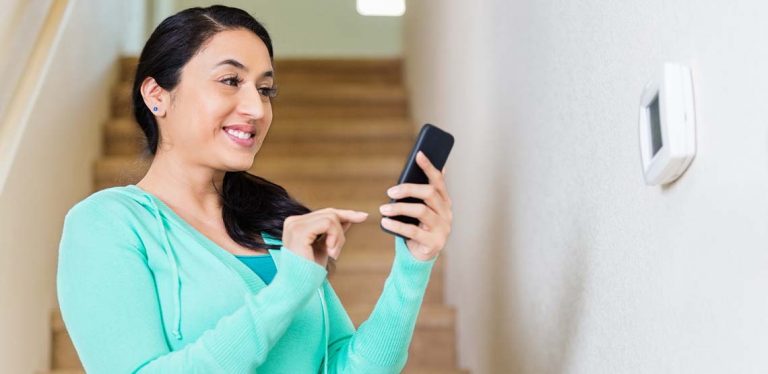Welcome to the World of WiFi Air Conditioners
What’s this? An air conditioner guide when we are in the final stretch of summer?
We may only have about two weeks left of summer, but that does not mean we should forget all about air conditioners until next year, especially with Black Friday coming sooner rather than later (Black Friday being the best time of year to buy pretty much anything technology-related).
The limits of human ingenuity are as far as the eyes can see, and in recent years, we have been tirelessly figuring out how to incorporate automation/smart technology into as many devices as we can. Air conditioners are no exception, so I would like to introduce you all to the wonderful world of WiFi air conditioners.
What are WiFi air conditioners, how do they work and why should you use them over traditional air conditioners? All good questions! Let’s provide you with the answers.
What Is a WiFi Air Conditioner?
A WiFi air conditioner is an air conditioner that can connect to your home’s WiFi network. This connectivity allows the user to control their air conditioner remotely through numerous smart devices.
What’s the Difference Between WiFi Air Conditioners and Traditional Ones?
I’m pretty sure the air conditioners of old cannot accept commands from Alexa or be switched on via your smart phone.
Simply put, WiFi air conditioners are just the new and improved version of the old reliable. Traditional air conditioners still work plenty fine, but they are just becoming antiquated as we get deeper into the digital age.
What Are the Pros?
Utility and Convenience
Are you worried about the cats and dogs being too hot while you are away? Did your kids send you a text complaining that it is too hot? Did you wake up in the middle of the night with your partner asking to turn the temperature down/up?
With a WiFi air conditioner unit, you can control it anywhere, at any time. No longer do you have to take that 2 a.m. walk down the hall (or even worse, down the stairs) to turn a few knobs. Just reach for your smartphone on your nightstand and do it from your bed. Or, if you have a device like Alexa, have them do it for you via voice commands.
If you are not in the residence, it is not a problem. As long as it is connected to your home network, you can manage it from your job or car. Centralization can be a good thing, as it turns out.
More Energy Efficient
When it is 100F outside and you are out and about for the day, you probably turn on your air conditioner before you leave. Otherwise, you will be coming home to a sauna and nobody likes that. With a WiFi unit, instead of leaving it on for hours and wasting energy, you can turn it on a couple of minutes before you arrive home. This saves you energy and it saves you money.
Ease of Use
Highlighting the benefits of centralization once again, it is noteworthy pointing out the ease of use that comes with owning a WiFi air conditioner. I do not know about the older adults of our readers, but I can tell you that those in my life have a hard time with her traditional air conditioner unit.
With everything centralized and connected to WiFi, learning how to use different household devices becomes as easy as downloading the appropriate app and just pressing a few buttons. Or, if you have a voice assistant, have them do all the work for you.
It might seem oxymoronic, but for people who are not the best with technology, this might be one of the best things that you can do to save yourself a lot of trouble.
Auto-Restart Functionality
A lot of technology nowadays can restart themselves without needing any input from the homeowner. Imagine you are out and about on a hot summer day, and you left the air conditioner on before you left. An unexpected summer storm happens, knocks out the power at home and messes up your air conditioner parameters. Chances are you come home to a temperature higher than you would have liked. With a WiFi air conditioner with auto-restart functionality, this is not a problem.
You May Also Like:
Related Search Topics (Ads)
What Are the Cons?
Price
In the long run, WiFi air conditioners will be saving you a significant amount of money. They do cost a pretty penny, however, so your wallet might get a little hurt upfront. This is why it is a good idea to save technology purchases for Black Friday; save as much money as you can.
Installation Can Be Tricky
WiFi air conditioners are one of those pieces of technology that are easy to use when they are set up but might give you a little bit of trouble with the initial installation. Instruction manuals for consumer technology have never been all that great and that has not really changed. If you know someone who is good with these sorts of things, maybe give them a call to help you out with the installation.
Can Take Up a lot of Space Depending on Selection
This should not be too much of a big deal, but some WiFi air conditioners can be fairly large. If you have pets and or small children, they could also be tripping hazards. Just something to keep in mind when making a purchase.
What to Remember Before Buying BTUs
BTUs, or British thermal units, is a measurement tool that determines an air conditioner’s power to cool. How it works is the more square feet an area/room has, the more BTUs you are going to want to ensure it is capable of keeping the entire room cool.
Best WiFi Air Conditioners
LG 9500BTU
Price: $409
The LG 9500BTU is currently unavailable on Amazon but goes for just over $400. It offers up a lot of value for a great price. With an estimated cooling area of 450 square feet, this window unit has four different cooling and fan speeds, as well as four-way air deflection.
This unit possesses a dual inverter compressor that eliminates unwanted noises and reduces noise levels. It can be controlled via LG’s ThinQ app, which works on both Apple and Android devices. It is also compatible with voice assistants like Alexa and Google Assistant.
One thing to keep in mind is that this tiny beast weighs 71 pounds, so maybe have someone help to lift things up and put them down with you when you purchase it and set it up in your home.
De’Longhi 4-In-1 Portable 12500BTU
Price: $679
De’Longhi’s 4-In-1 Portable is a top contender for the best portable WiFi air conditioner on the market. It has an estimated cooling area of 500 square feet and functions as an air conditioner, heater, dehumidifier and fan.
The caster wheels and integrated handles on the 4-In-1 Portable make moving this unit between rooms easy, regardless of it weighing 83 pounds. It comes equipped with its own remote and can also be handled via the De’Longhi PAC app. It’s available on Apple and Android devices alike and can be synced with voice assistants and smart speakers. The app allows you to customize everything from temperatures, schedules, fan speeds and modes.
Heat & Cool Klimaire 18,000BTU Inverter Mini-Split AC
Price: $859
The Heat & Cool Klimaire 18,000BTU is a formidable beast indeed, capable of cooling an area of up to 1,000 square feet. Providing cooling, heating, dehumidification functions and more, it has a 24-hour timer and memory function, which enables it to remember your preferred settings.
It also possesses the always useful auto restart function and self-cleaning functionality to prevent mildew buildup. The home-away freeze protection feature will ensure that this piece of technology keeps your home from dipping below 46F while you are away.
This is a wall-mounted unit, and the quick hook design should make it easier to get it into place, but keep in mind that it does weigh a whopping 118 pounds.
Friedrich Chill Premier 12,000BTU
Price: $459
Keeping rooms up to 550 square feet nice and cool, the Friedrich Chill Premier 12,000 BTU is a great unit at a low cost.
Tried and tested, the Premier 12,000 is roughly 25% quieter than similar spec window air conditioner units. It can be controlled with the packaged remote control or with the FriedrichGo app for Apple and Android devices.
It features three different cooling settings, three fan speeds, eight-way airflow control with the option of setting up a seven-day schedule, and a 24-hour timer. Like all our picks, it is heavy, so you probably want some assistance setting it up, but there should be no problem using it after that initial hurdle.
This device is not compatible with 120V outlets and instead requires 220V or a 240V outlet to plug into. It’s highly possible that you have no idea what kind of outlet you have, so just double check before making a purchase.

